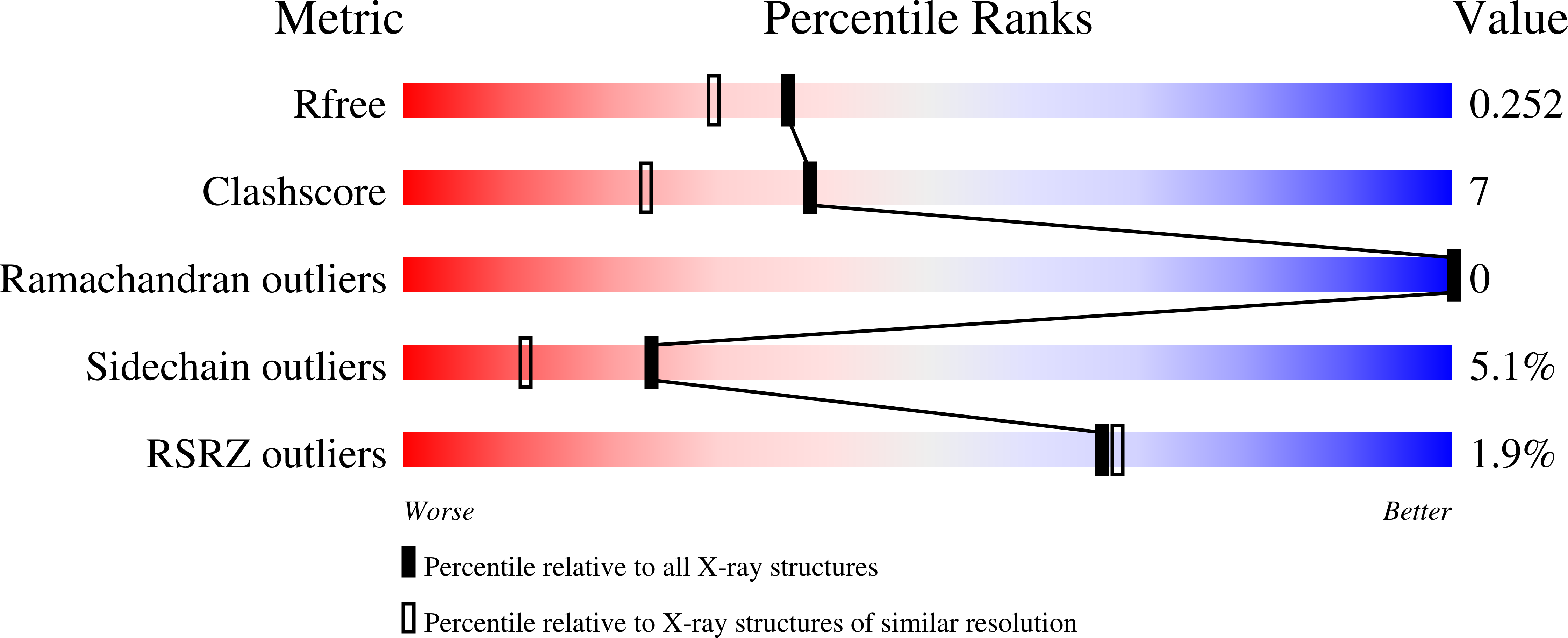Implications for the evolution of eukaryotic amino-terminal acetyltransferase (NAT) enzymes from the structure of an archaeal ortholog.
Liszczak, G., Marmorstein, R.(2013) Proc Natl Acad Sci U S A 110: 14652-14657
- PubMed: 23959863
- DOI: https://doi.org/10.1073/pnas.1310365110
- Primary Citation of Related Structures:
4LX9 - PubMed Abstract:
Amino-terminal acetylation is a ubiquitous modification in eukaryotes that is involved in a growing number of biological processes. There are six known eukaryotic amino-terminal acetyltransferases (NATs), which are differentiated from one another on the basis of substrate specificity. To date, two eukaryotic NATs, NatA and NatE, have been structurally characterized, of which NatA will acetylate the α-amino group of a number of nonmethionine amino-terminal residue substrates such as serine; NatE requires a substrate amino-terminal methionine residue for activity. Interestingly, these two NATs use different catalytic strategies to accomplish substrate-specific acetylation. In archaea, where this modification is less prevalent, only one NAT enzyme has been identified. Surprisingly, this enzyme is able to acetylate NatA and NatE substrates and is believed to represent an ancestral NAT variant from which the eukaryotic NAT machinery evolved. To gain insight into the evolution of NAT enzymes, we determined the X-ray crystal structure of an archaeal NAT from Sulfolobus solfataricus (ssNAT). Through the use of mutagenesis and kinetic analysis, we show that the active site of ssNAT represents a hybrid of the NatA and NatE active sites, and we highlight features of this protein that allow it to facilitate catalysis of distinct substrates through different catalytic strategies, which is a unique characteristic of this enzyme. Taken together, the structural and biochemical data presented here have implications for the evolution of eukaryotic NAT enzymes and the substrate specificities therein.
Organizational Affiliation:
Program in Gene Expression and Regulation, The Wistar Institute, Philadelphia, PA 19104, USA.
















